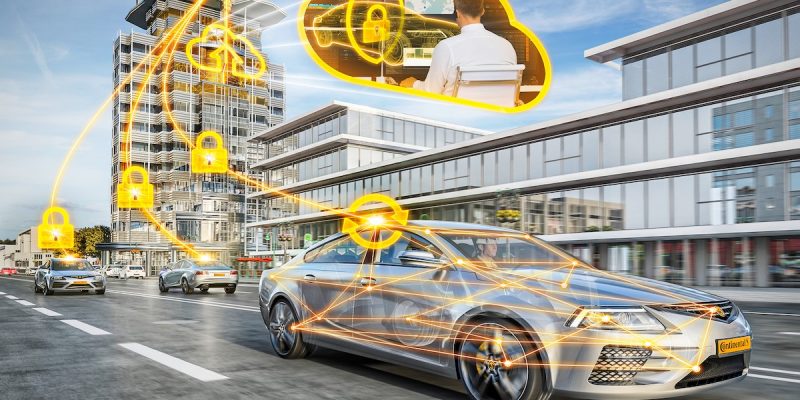
Iot trends in automotive industryThanks to the Web of Things’ transformation of the automotive business, the next generation of automobiles will be characterized by connectivity. The automobile sector is one particular of the fastest-growing markets for IoT-based options. By 2020, more than 250 million automobiles are expected to be connected which highlights the impacts of IoT to automotive market. The number of installed connectivity units in autos is likely to enhance by 67% over the subsequent two years , and consumer spending on in-vehicle connectivity is anticipated to double by the finish of the decade. Drivers about the globe anticipate their automobiles to turn out to be smartphones on wheels, and IoT is currently proving car connectivity to be the most promising futuristic technologies.
The most successful aspects of IoT in automobiles are the Vehicle to Automobile (V2V) and Automobile Infrastructure Integration technologies. Despite the fact that still below research these technologies are proving to really helpful in the sensible application they have been subject to so far. V2V and VII, collectively identified as V2X integration function by enabling a communication network amongst devices embedded within the auto in sensor and other types, with wearable, portable and centralized devices which will be relaying information amongst every other. This network will enable functions from fundamental monitoring and diagnostics to the automation of a variety of processes such as driving itself. Progress on the information analytics front will further enable this to leveraged to a higher extent permitting more effective coordination between devices which could ultimately lead to a safer, smoother and enjoyable ride.
With IoT devices, millions of drivers can connect to over-the-air computer software and data platforms to receive function updates, software upgrades, safety improvements, bug fixes, and map and targeted traffic updates. V2V, V2I, and V2X connectivity is about to commence a new era in fleet management. Finally, a Wi-Fi connection is now adequate to get connected to road infrastructure, creating the drive smooth and protected. The IoT reality is closer than you may possibly believe.
IoT For Automotive Deconstructediot automotive market
iot impact on automotive industryThanks to the Net of Things’ transformation of the automotive industry, the next generation of vehicles will be characterized by connectivity. The truck transportation segment is at times unfairly disregarded by market analysts and automotive-associated firms. Yet you would not be incorrect in saying that the segment is becoming a laboratory for the boldest tech concepts. Radical transformations and challenges, which includes mass turnover, are forcing OEMs and developers to implement innovations in logistics instantly.
Instead of creating the vehicle, automobile manufacturers need to have to build the brand and the relationship with the client. It can no longer be a point-of-sale connection it has to be continually nurtured to develop a permanence and that is going to take a direct line of sight to the customer that can’t be maintained with the existing dealer-driven sales structure,” he mentioned.
Cars can now also be connected to external services such as, laundry and e-commerce transactions, enabling goods to be delivered direct to your auto. All this indicates that the automotive industry is racing to provide the ‘connected car’ on a grand vision to entirely revolutionise the way in which people interact with their autos.
How IoT Will Transform The Automotive Market?iot projects in automotive industry
iot trends in automotive industryAutomotive IoT applications are unlocking new worth for the auto industry. Hertz joined the SAP Vehicles Network to become the first rental firm to leverage the IoT for offering personalised knowledge to its customers. The partnership will allow Hertz to integrate in-automobile personalisation with travel and itinerary arranging to offer its buyers just what they require. Apart from this, Hertz will also use Concur Technologies’ TripLink to permit buyers to produce an all-inclusive expense report at a single click. This, in turn, will save time and enhance user comfort.
Some of the major organizations in the global automotive IoT marketplace are Apple, Inc., AT&T Inc., Audi AG, Cisco Systems, Inc., Ford Motor Firm, Basic Motors, Google Inc., Intel Corporation., International Organization Machines Corporation, Microsoft Corporation, NXP Semiconductors N.V., Robert Bosch GmbH, Texas Instruments Inc., Thales Sa, and Tomtom N.V.
Although we’re not however piloting those flying cars that we’ve been promised since the 1960s, today’s automobiles are about as high-tech as they come. Advances in IoT technology allow us to preserve a seamless connection to our digital lifestyle on the go, leveraging compatible infrastructure about us to assist us do more, go farther, and travel safer.
IoT For Automotiveiot applications in automotive industry
iot automotive industry pdfOf all the industries that the Internet of Factors (IoT) has influenced, the automotive sector — with its connected car — seems to stay especially profitable at capturing the interest of shoppers. Predictive upkeep technologies is based on the use of IoT connectivity tools that collect data on the functionality of diverse parts, transfer that information to the cloud in actual time, and evaluate the risks of prospective malfunction of a car’s hardware or software program. After info is processed, a driver is notified and advised of any required service or repair to avoid possible incidents.
It’s tough to say definitively how IoT applications in automotive automobiles will influence humanity. Most developers tend to believe that connected cars and the IoT will revolutionize the existing transportation system But will the alterations be far more unfavorable or good? Take a look at the attainable pros and cons of implementing IoT in automotive manufacturing.
The term Internet of Items (IoT) refers to billions of physical devices connected to the net. IoT devices can gather, share, and exchange information with other connected devices or databases. Wireless technology lies at the core of IoT-based digital intelligence, enabling all kinds of devices to communicate and operate without human involvement. In reality, virtually any physical object can be regarded as an IoT device as soon as it really is connected to the internet.




